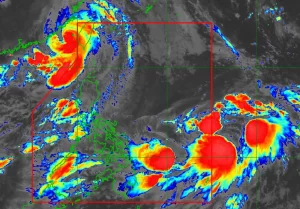Strategic Alliance Forged: US Enlists Philippines as Bulwark Against China’s Expansion
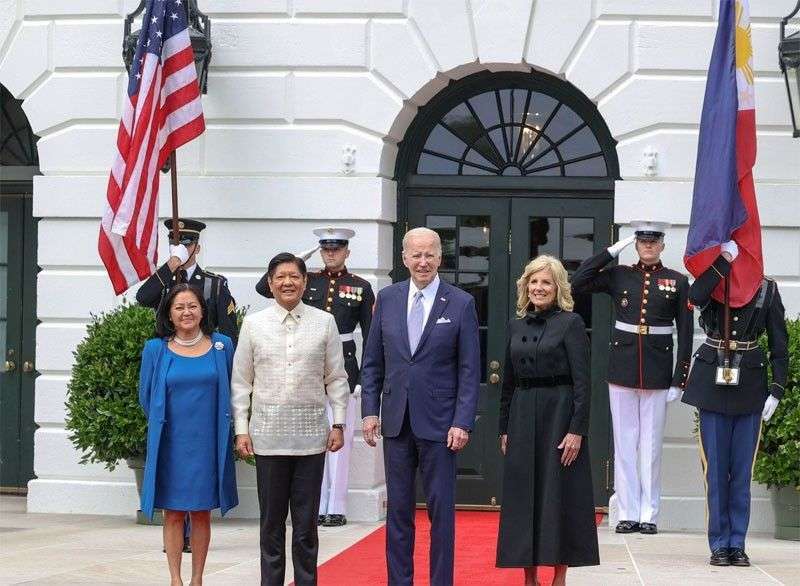
Chinese Ascendancy: US Forges Closer Partnership with Philippines
Introduction
China, a vast and resource-rich maritime region, has become a flashpoint of geopolitical tension in recent years. China’s increasingly assertive claims to the majority of the sea, overlapping with the territorial assertions of several Southeast Asian nations, have raised concerns about the potential for conflict and instability in the region. The United States, long a key player in the Asia-Pacific, has responded by strengthening its security ties with its allies, including the Philippines. The US-Philippines strategic alliance, rooted in a long history of shared interests and values, has emerged as a critical bulwark against China’s growing influence in the South China Sea.
The Rise of China and the South China Sea Dispute
China’s rapid economic growth and military modernization have transformed it into a major power player in the Asia-Pacific region. Its growing assertiveness in the South China Sea, particularly its militarization of disputed islands and reefs, has alarmed neighboring countries and the United States. The Philippines, with its extensive coastline and overlapping territorial claims with China, has been at the forefront of these concerns.
In 2012, the Philippines filed an arbitration case against China’s sweeping claims under the United Nations Convention on the Law of the Sea (UNCLOS). In 2016, the Permanent Court of Arbitration (PCA) ruled in favor of the Philippines, invalidating China’s expansive claims and upholding the Philippines’ rights in its exclusive economic zone (EEZ). China, however, has refused to abide by the ruling, further escalating tensions in the region.
The US-Philippines Strategic Alliance: A Cornerstone of Regional Security
The US-Philippines strategic alliance, dating back to the early 20th century, is one of the oldest and closest in the Asia-Pacific region. The alliance is rooted in shared interests, including promoting democracy, human rights, and regional stability. The US commitment to the Philippines’ defense is enshrined in the Mutual Defense Treaty (MDT) of 1951, assuring US intervention in case of an armed attack against the Philippines.
In recent years, the US and the Philippines have strengthened their defense cooperation in response to China’s growing assertiveness in the South China Sea. The Enhanced Defense Cooperation Agreement (EDCA) of 2016 grants the US increased access to Philippine military bases and allows for the rotation of US troops through the country.
The US has also increased its military presence in the South China Sea, conducting regular freedom of navigation operations (FONOPs) to challenge China’s excessive maritime claims. The US has also engaged in joint military exercises with the Philippines and other regional allies, such as Japan and Australia, to enhance interoperability and deter potential aggression.
The Philippines’ Role in the US Indo-Pacific Strategy
The Philippines plays a central role in the US Indo-Pacific Strategy, which aims to promote a free and open Indo-Pacific region. The Philippines’ strategic location, with its maritime borders facing the South China Sea and the Pacific Ocean, makes it a crucial partner in the US efforts to counter China’s growing influence and maintain a rules-based international order.
The Philippines’ participation in the US-led Quadrilateral Security Dialogue (Quad), alongside the US, Japan, and Australia, further underscores its importance in the US Indo-Pacific Strategy. The Quad, seen as a counterweight to China’s growing power, focuses on promoting regional security, economic cooperation, and democratic values.
Challenges and Prospects
The US-Philippines strategic alliance faces challenges, including domestic political developments in the Philippines and the potential for miscalculations or provocations in the South China Sea. However, the alliance remains strong, and both countries are committed to deepening their cooperation.
The future of the US-Philippines strategic alliance will depend on the ability of both countries to manage their differences, adapt to the evolving security landscape, and maintain their commitment to shared values and interests. The alliance will continue to play a critical role in maintaining regional stability and deterring conflict in the South China Sea.
Conclusion
The US-Philippines strategic alliance stands as a testament to the enduring partnership between two democracies committed to a free and open Indo-Pacific region. In the face of China’s growing influence and the potential for conflict in the South China Sea, the alliance remains a vital bulwark for regional security and stability. The future of the alliance will depend on the ability of both countries to adapt to changing circumstances and maintain their shared commitment to a stable and prosperous Indo-Pacific region.
Advertisement

US Cultivates Philippines as Diplomatic Ally to Counter Chinese Hegemony
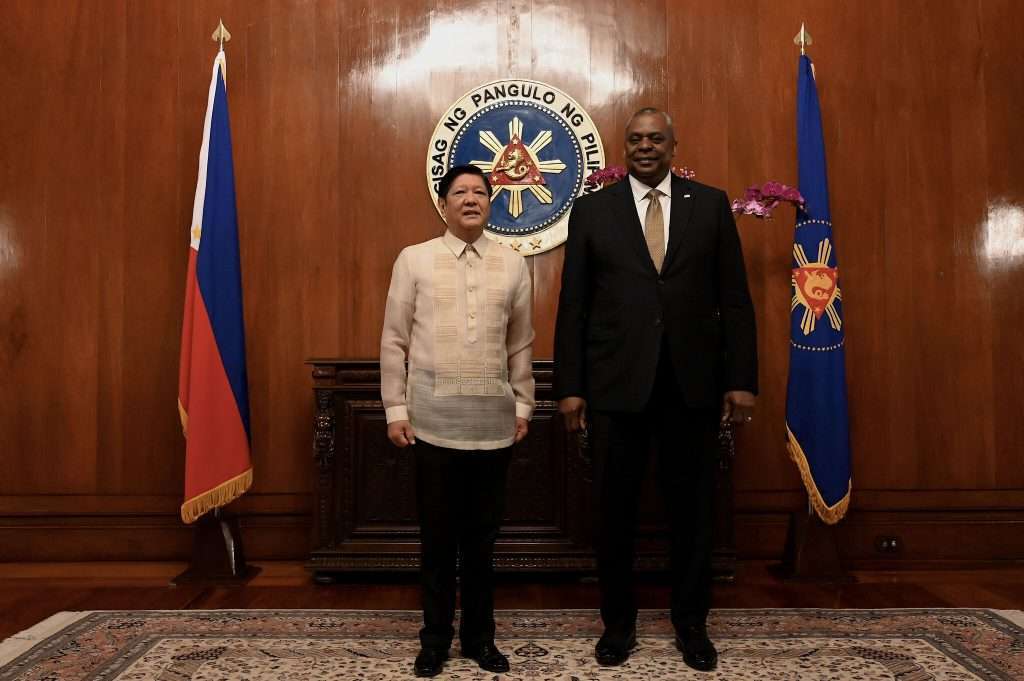
Philippines’ Pivot Towards US: Implications for Regional Stability
Introduction
The Philippines’ recent foreign policy shift, marked by a closer alignment with the United States and a distancing from China, has significant implications for regional stability in the Asia-Pacific. This pivot, driven by a range of factors, including concerns over China’s growing assertiveness in the South China Sea, has reshaped the geopolitical landscape of the region.
Historical Context of Philippines-US Relations
The Philippines and the United States have a long-standing and multifaceted relationship, rooted in shared history, cultural ties, and a mutual defense treaty. The two countries have cooperated extensively in various domains, including security, economics, and development. However, the relationship has not always been smooth, with periods of strain and differing perspectives on regional issues.
Drivers of the Philippines’ Pivot Towards US
Another factor is the Philippines’ perception of China’s growing economic influence in the region, which has raised concerns about potential economic dependence and encroachment on Philippine sovereignty. Additionally, the Philippines has expressed concerns over China’s human rights record and its growing military capabilities.
In contrast, the Philippines has seen the United States as a consistent and reliable partner, committed to upholding regional stability and respecting international law. The US commitment to the Philippines’ defense under the Mutual Defense Treaty (MDT) of 1951 has provided a sense of security and reassurance.
Manifestations of the Philippines’ Pivot
The Philippines’ pivot towards the US has manifested in several ways, including:
- Strengthened Defense Cooperation: Enhanced exercises, increased US troop presence, and expanded access to Philippine military bases under the Enhanced Defense Cooperation Agreement (EDCA) of 2016.
- Increased Economic Engagement: Growing trade and investment ties, coupled with US development assistance focused on infrastructure, education, and healthcare.
- Closer Diplomatic Alignment: Coordination on regional issues, including the South China Sea, human rights, and North Korea’s nuclear program.
Implications for Regional Stability
The Philippines’ pivot towards the US has significant implications for regional stability.
- Deterrence and Stability: The strengthened US-Philippines alliance serves as a deterrent against potential aggression, promoting regional stability and reducing the risk of conflict.
- Rules-Based Order: The alliance’s commitment to international law and multilateralism helps uphold a rules-based order in the region, promoting peaceful resolution of disputes and respecting sovereignty.
- Balancing Power Dynamics: The Philippines’ closer ties with the US counterbalance China’s growing influence in the region, promoting a more balanced and multipolar order.
Challenges and Opportunities
While the Philippines’ pivot towards the US has positive implications for regional stability, it also presents challenges.
- Managing China’s Response: Navigating China’s reaction to the US-Philippines alliance is crucial to avoid escalating tensions and maintaining diplomatic channels.
- Maintaining Domestic Support: Ensuring domestic consensus and support for the pivot is essential to sustain the alliance’s effectiveness.
- Promoting Regional Cooperation: Fostering cooperation among regional partners, including China, is important for addressing shared challenges and promoting long-term stability.
Conclusion
The Philippines’ pivot towards the US has reshaped the geopolitical landscape of the Asia-Pacific, with significant implications for regional stability. The strengthened alliance serves as a deterrent against conflict, upholds a rules-based order, and promotes a more balanced regional power dynamic. While challenges remain in managing China’s response, maintaining domestic support, and fostering regional cooperation, the Philippines’ pivot presents an opportunity to enhance regional stability and peace.
You May Also Like: Chikaminute
South China Sea Rivalry: US Woos Philippines to Thwart China’s Territorial Ambitions
The South China Sea, a vast and strategically important maritime region, has become a flashpoint of geopolitical tension in recent years. China’s growing assertiveness in the South China Sea, including its militarization of disputed islands and reefs, has alarmed its neighbors and the United States.
The United States has responded by strengthening its security ties with its allies in the region, including the Philippines. The US-Philippines strategic alliance, one of the oldest and closest in the Asia-Pacific region, has been further strengthened in recent years. The two countries have conducted joint military exercises, increased US troop presence in the Philippines, and signed the Enhanced Defense Cooperation Agreement (EDCA), which grants the US greater access to Philippine military bases.
Several factors have contributed to the Philippines’ recent shift towards the United States. One key driver is China’s growing assertiveness in the South China Sea, where overlapping territorial claims have led to tensions and disputes. The Philippines, with its extensive coastline and overlapping claims with China, has been at the forefront of these concerns.
The Philippines, with its extensive coastline and overlapping territorial claims with China, has been a key player in the South China Sea dispute. In 2016, the Philippines won a landmark case against China at the Permanent Court of Arbitration (PCA), which invalidated China’s expansive claims in the South China Sea. However, China has refused to abide by the PCA ruling.
The US has courted the Philippines in recent years in an effort to counter China’s growing influence in the South China Sea. The US has provided the Philippines with military assistance, economic aid, and diplomatic support. The US has also encouraged the Philippines to join the Quad, a four-nation security alliance with Japan, Australia, and India.
The US-Philippines alliance is a key component of the US Indo-Pacific Strategy, which aims to promote a free and open Indo-Pacific region. The US Indo-Pacific Strategy is seen as a counter to China’s Belt and Road Initiative, which has been criticized for its lack of transparency and environmental impact.
The South China Sea rivalry is likely to continue for the foreseeable future. The US and China are unlikely to reach a resolution to the dispute, and the two countries are likely to continue to maneuver for advantage in the region.
US and Philippine maps highlighting the South China Sea
The South China Sea rivalry is a complex and dynamic situation with far-reaching implications for the Asia-Pacific region and the world. The US and China are likely to continue to play a major role in shaping the future of the region.
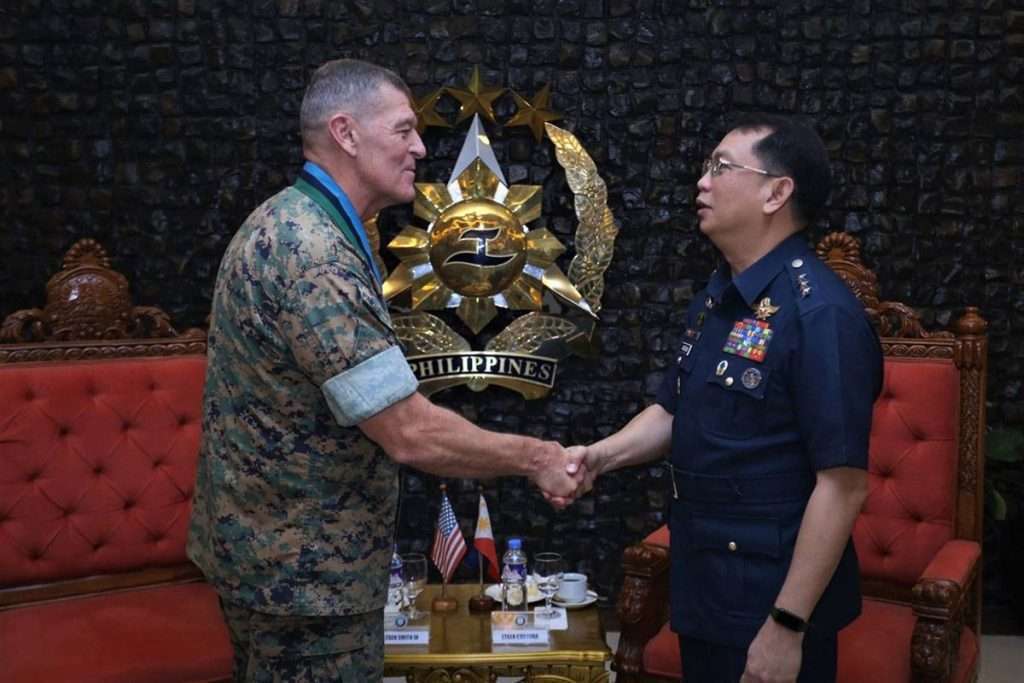
Advertisement

Diplomatic Coup: US Seduces Philippines to Counter China’s Ascendancy
Philippines-US Partnership: A Realignment in the Asia-Pacific
Introduction
The Philippines-US partnership, a cornerstone of regional security and stability in the Asia-Pacific, has undergone a significant realignment in recent years, reflecting the evolving geopolitical landscape and the growing assertiveness of China in the region. This realignment, characterized by a deepening of defense cooperation, economic engagement, and diplomatic alignment, has reshaped the dynamics of the region and has implications for the future of the Indo-Pacific.
Historical Context of Philippines-US Relations
The Philippines and the United States share a long and complex history, marked by both cooperation and conflict. The two countries established formal diplomatic relations in 1902, and the US played a crucial role in the Philippines’ struggle for independence from Spain. However, the relationship has also been strained at times, particularly during the Marcos dictatorship and the US military presence in the Philippines.
Despite these challenges, the Philippines-US partnership has remained a pillar of regional stability and security. The two countries are bound by the Mutual Defense Treaty (MDT) of 1951, which commits the US to defend the Philippines in case of an armed attack. The alliance has also been instrumental in promoting economic development, democracy, and human rights in the region.
Drivers of the Philippines-US Realignment
The recent realignment of the Philippines-US partnership has been driven by several factors, including:
- China’s Growing Assertiveness: China’s growing assertiveness in the South China Sea, particularly its militarization of disputed islands and reefs, has alarmed the Philippines and other regional countries. The Philippines, with its extensive coastline and overlapping territorial claims with China, has been at the forefront of these concerns.
- US Indo-Pacific Strategy: The US Indo-Pacific Strategy, which aims to promote a free and open Indo-Pacific region, has placed a renewed emphasis on the Philippines as a key strategic partner. The US sees the Philippines as a critical node in its efforts to counter China’s growing influence and maintain a rules-based order in the region.
- Domestic Political Developments: Domestic political developments in the Philippines have also played a role in the realignment. The election of President Rodrigo Duterte in 2016 initially led to a period of uncertainty in the Philippines-US relationship. However, Duterte has since pursued a more pragmatic approach, recognizing the importance of the US alliance for Philippine security and economic interests.
Manifestations of the Philippines-US Realignment
The Philippines-US realignment has manifested in several ways, including:
- Strengthened Defense Cooperation: The Enhanced Defense Cooperation Agreement (EDCA) of 2016 has expanded US access to Philippine military bases and facilitated joint military exercises. The US has also increased its military presence in the Philippines, including the rotation of US troops through the country.
- Increased Economic Engagement: The US and the Philippines have strengthened their economic ties through trade and investment agreements. The US is also a major provider of development assistance to the Philippines, focusing on infrastructure, education, and healthcare.
- Closer Diplomatic Alignment: The Philippines and the US have coordinated on a range of regional issues, including the South China Sea, human rights, and North Korea’s nuclear program. The Philippines has also expressed interest in joining the Quad, a four-nation security alliance with Japan, Australia, and India.
Implications for the Indo-Pacific
The Philippines-US realignment has significant implications for the Indo-Pacific:
- Deterrence and Stability: The strengthened alliance serves as a deterrent against potential aggression, promoting regional stability and reducing the risk of conflict.
- Rules-Based Order: The alliance’s commitment to international law and multilateralism helps uphold a rules-based order in the region, promoting peaceful resolution of disputes and respecting sovereignty.
- Balancing Power Dynamics: The Philippines’ closer ties with the US counterbalance China’s growing influence in the region, promoting a more balanced and multipolar order.
Challenges and Opportunities
While the Philippines-US realignment has positive implications for the Indo-Pacific, it also presents challenges:
- Managing China’s Response: Navigating China’s reaction to the US-Philippines alliance is crucial to avoid escalating tensions and maintaining diplomatic channels.
- Maintaining Domestic Support: Ensuring domestic consensus and support for the realignment is essential to sustain the alliance’s effectiveness.
- Promoting Regional Cooperation: Fostering cooperation among regional partners, including China, is important for addressing shared challenges and promoting long-term stability.
Conclusion
The Philippines-US realignment has reshaped the geopolitical landscape of the Indo-Pacific, with significant implications for regional stability and the balance of power in the region. The strengthened alliance serves as a deterrent against conflict, upholds a rules-based order, and promotes a more balanced regional power dynamic. While challenges remain in managing China’s response, maintaining
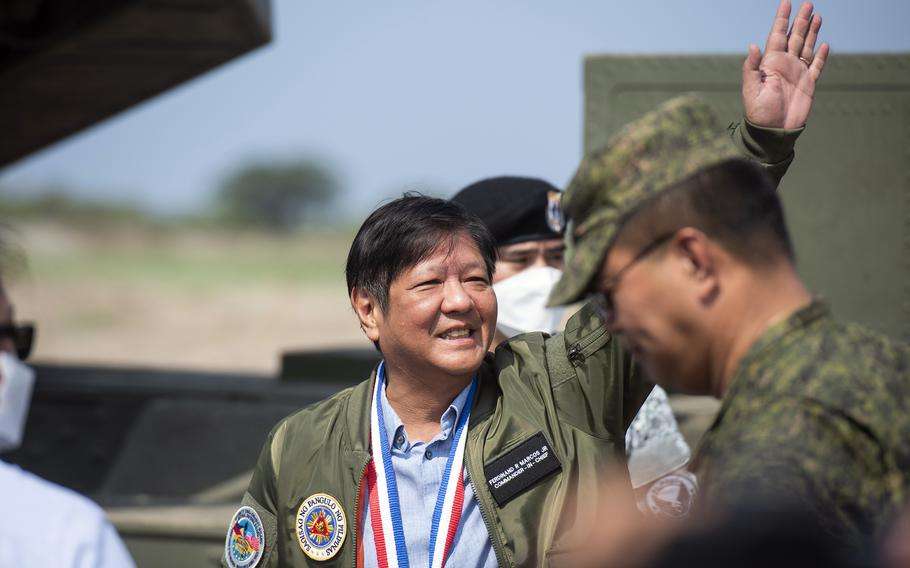
Geopolitical Power Play: US Emphasizes Alliance with Philippines to Curb China’s Influence
The Philippines in the US’s Indo-Pacific Strategy: Countering China’s Expansionist Agenda
The United States has identified the Indo-Pacific region as its top foreign policy priority, in part to counter China’s growing influence and expansionist agenda. The Philippines plays a critical role in the US Indo-Pacific Strategy, given its strategic location, strong security ties with the US, and growing economic importance.
China’s Growing Influence in the Indo-Pacific
China has been rapidly expanding its influence in the Indo-Pacific region in recent years. This expansion has been driven by China’s economic growth, its growing military capabilities, and its assertive foreign policy. China has been investing heavily in infrastructure development in the region, expanding its military presence, and pursuing territorial claims in the South China Sea.
China’s expansion has alarmed many countries in the Indo-Pacific region, including the Philippines. The Philippines has overlapping territorial claims with China in the South China Sea, and it has been concerned about China’s militarization of disputed islands and reefs. China’s growing economic influence in the region has also raised concerns about potential economic dependence and encroachment on Philippine sovereignty.
The US Indo-Pacific Strategy
In response to China’s growing influence, the United States has unveiled its Indo-Pacific Strategy. The strategy outlines the US’s vision for a free and open Indo-Pacific region, where countries can prosper and cooperate without fear of coercion. The strategy calls for the US to:
- Strengthen alliances and partnerships: The US is committed to strengthening its alliances and partnerships with regional countries, including the Philippines, Japan, Australia, and India.
- Promote free trade and investment: The US is committed to promoting free trade and investment in the region, and it has launched several initiatives to do so, such as the Indo-Pacific Economic Framework.
- Enhance security cooperation: The US is committed to enhancing security cooperation with regional partners to address common threats, such as terrorism and maritime security.
- Uphold international law and norms: The US is committed to upholding international law and norms in the Indo-Pacific region, including the United Nations Convention on the Law of the Sea (UNCLOS).
The Role of the Philippines in the US Indo-Pacific Strategy
The Philippines plays a critical role in the US Indo-Pacific Strategy. The Philippines is a strategic ally of the US and is located in a key position in the Indo-Pacific region. The Philippines is also a growing economy with a strong democratic tradition. Given its strategic location, strong security ties with the US, and growing economic importance, the Philippines is a valuable partner for the US in its efforts to counter China’s growing influence and promote a free and open Indo-Pacific region.
US-Philippines Defense Cooperation: The US and the Philippines have a long history of defense cooperation. The two countries are allies under the Mutual Defense Treaty (MDT), which commits the US to defend the Philippines in case of an armed attack. The US and the Philippines also conduct regular joint military exercises, and the US has a substantial military presence in the Philippines.
In recent years, the US and the Philippines have strengthened their defense cooperation in response to China’s growing assertiveness in the South China Sea. The two countries signed the Enhanced Defense Cooperation Agreement (EDCA) in 2016, which allows the US to rotate troops through the Philippines and store military equipment there. The US has also increased its military presence in the Philippines, conducting more frequent freedom of navigation operations (FONOPs) in the South China Sea.
US-Philippines Economic Cooperation: The US and the Philippines also have a strong economic relationship. The US is the Philippines’ largest trading partner, and there is a significant amount of US investment in the Philippines. The US also provides development assistance to the Philippines, focusing on areas such as infrastructure, education, and healthcare.
In recent years, the US and the Philippines have expanded their economic cooperation. The two countries have signed a number of trade and investment agreements, and the US has increased its development assistance to the Philippines. The US has also encouraged the Philippines to join the Quad, a four-nation security alliance with Japan, Australia, and India, which is seen as a counter to China’s Belt and Road Initiative.
Advertisement



